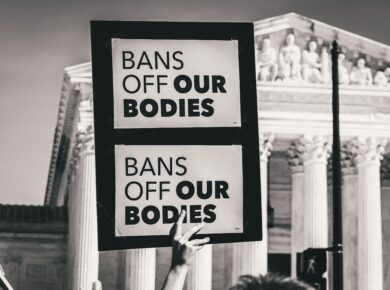Disclaimer: This blog post solely reflects the opinion of the authors and should not be taken to represent the general views of IPPR’s management team or those of fellow authors.
Source: Creative Commons
An entire temporary city housing thousands of indigenous peoples and their allies from all over the world, violent confrontations involving mercenaries and dog attacks, and the destruction of many sacred sites. These are all images associated with the protests surrounding the Dakota Access Pipeline spearheaded by the Hunkpapa Lakota, Sihasapa Lakota and Yanktonai Dakota of the Standing Rock Indian Reservation. The pipeline, which is currently in operation, already has had several leaks which disproportionately affect indigenous and rural communities while having been promised to be safe and sound. This is especially significant as the pipeline was rerouted away from the predominately white city of Bismarck, for well-founded fears of pollution. The Dakota Access Pipeline highlights the different ways environmental discussions are inextricably linked with considerations of justice and human rights. This was also the topic of the panel Environmental Justice in a Changing Climate hosted by the University College London’s Global Governance Institute on the 21stof May, 2019.
Environmental justice is the larger movement originating in frontline and grassroots communities advocating for an approach to climate change that is accessible to everyone and reduces pre-existing inequities exacerbated by a changing climate. Increasingly as consequences of climate change are seen around the world, concepts of preparation and recovery have become more central in this movement. Gordon Walker, Lancaster University, expands this definition of environmental justice by highlighting how there is an intertwining of the environment and social difference. This especially is visible as local consumption patterns become global. This means that the ways we live our lives in geographically confined spaces has impacts globally – just consider where your food, clothing, and electronics come from and where your tuition, waste, and communications go.
Walker continues by highlighting the different forms environmental justice can take, although it is important to remember that all these forms of justice are interlinked and interdependent. One of the most discussed and visible forms of justice is distributive justice, which concerns itself with the vulnerabilities of people affected and the responsibilities for harms enacted by others. An example can be the return of land to displaced and decimated indigenous communities, as happened with the Wiyot who aim to revive cultural practices and restore the ecology of the recently returned Indian Island. The second form of justice is procedural justice, which means to have access to information and be able to participate in decision-making. Maria Lee, University College London, argued that this form of justice is increasingly encoded in law however it remains rather ill-defined. In these laws it often remains unclear exactly how to approach different communities and how they might be impacted by projects engaging with climate change such as windfarms or creating new national parks. Similarly, it remains unclear how to mitigate pre-existing barriers that might impact participation such as linguistic abilities, gender, and distance. A recent example of procedural justice delivered is when an Ecuadorian court recognized that the indigenous Waorani were not consulted before their ancestral land was auctioned off to oil companies. The third form of justice is that of recognition. This means that the state recognizes your identities and positionalities and seeks to counter discrimination and stigmatization on the grounds of those identities, which recently happened when Japan officially recognized the Ainu as an indigenous people. The final form of environmental justice is epistemic justice, which focuses on how our knowledge regarding climate change and how to counter it is created. It is similar to procedural justice as it focuses on who is able to participate in relevant processes, but focuses explicitly on what knowledge in those processes is visible and counted as valid. The recent turn in environmental and ecology studies to consult indigenous knowledge sets is a testimony to figuring out what epistemic justice might look like.
By illustrating all these forms of justice with examples of indigenous rights I aim to illustrate that indeed a sustainable and proactive response to climate change is interlinked with the expansion and protection of human rights. This is essential as vulnerable communities such as indigenous peoples, but also island communities, desert people, and refugees and migrants, are at an increased risk and also possess important knowledge that can aid the global community. Brian Gerber, Arizona State University, added the important reminder that this is not just about general climate policy, but regarding every aspect of governance. Gerber specializes in disaster recovery policy, and highlighted with examples such as Hurricane Katrina that marginalized communities face the most devastating consequences of disasters while receiving the least assistance in recovery. Additionally, often recovery policies focus on returning people to a pre-disaster state, which for marginalized communities perpetuates inequality and erodes future climate change resilience.
As more and more people experience a sense of urgency regarding climate change and the seeming lack of concrete and swift action to prevent it, it becomes increasingly important to highlight environmental justice. An authoritarian turn to ensure rapid action might appear tempting, but not only would that leave out the inequalities embedded in our societies, it would also lack important access points to essential knowledge and fail to deliver sustainable change to all communities. Environmental justice provides a governance framework aimed at the inclusion of all affected communities and seeks solutions that are not only reactive, but also target what caused climate change to begin with.






